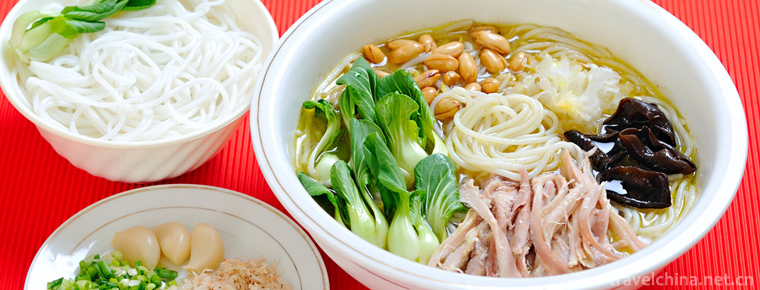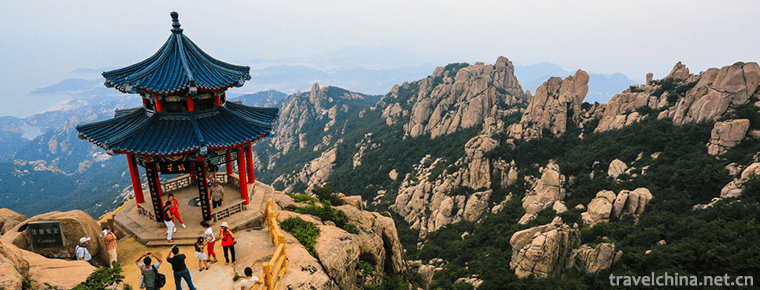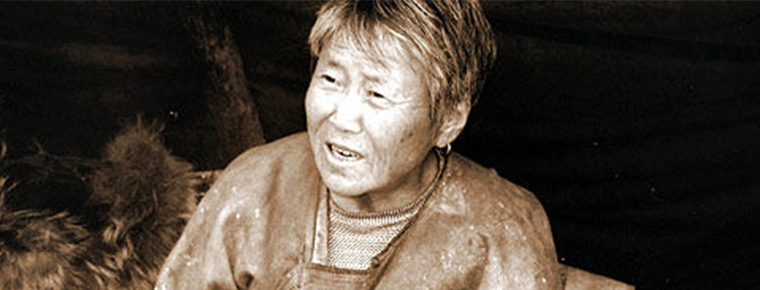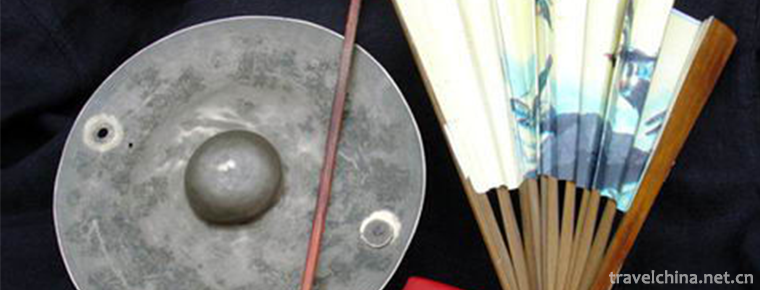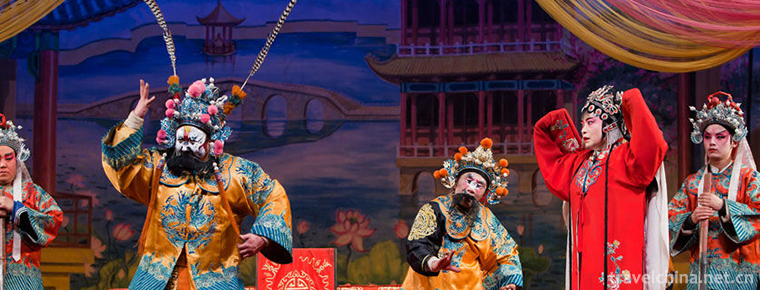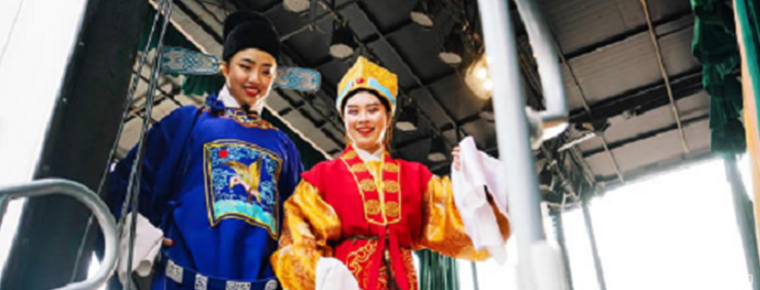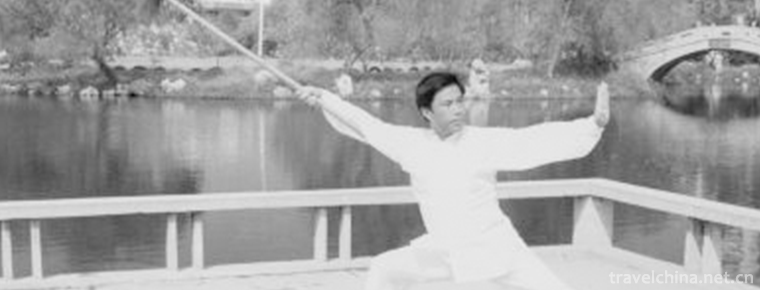Bouyei costume Guizhou Province
Bouyei costume Guizhou Province
As a material and cultural phenomenon, the production and change of Buyi costumes are always in line with the social and economic development. Since ancient times, Buyi people have lived in Nanpan River, Hongshui River Basin and its tributaries. The terrain of Buyi nationality area is complex, and the dangerous mountain area is the natural barrier of every Buyi nationality area. The Buyi nationality was developed from the ancient Yue people. Its clothes generally retain the ancient characteristics, "Old Tang Shu Southwest Man" contains: "Men left-jacketed, exposed, barefoot. Women's horizontal cloth two pieces, wear in the middle and run through the first, called the full skirt. The traditional clothes of Buyi nationality are men's clothes, women's skirts and women's clothes. The skirts are decorated with batik, pick-up and embroidery patterns. Because the Buyi people live in the tropics and the climate is hot and warm, this kind of loose dress accords with the climate characteristics.
On November 11, 2014, Buyi costumes were approved by the State Council and listed in the fourth batch of national intangible cultural heritage list.
Characteristic
Bouyei men and women like to wear blue, blue, black, white clothes. Young and middle-aged men often wrap headscarves and wear paired shorts (or long-skinned clothes) and trousers. Most elderly people wear paired skirts or long shirts. Women's clothes vary from place to place, some wear blue and black pleated skirts, some like embroidering on clothes, some like to wrap their heads with white towels, with silver bracelets, earrings, necklaces and other accessories. Women in Huishui and Changshun wear large-skinned shorts and trousers, embroidered bibs, and home-woven Plaid handkerchiefs. The girls'trousers in Huaxi area are decorated with "railings". They are tied around the waist, wearing headdresses, and braided plates on the headdresses. The women in Biantang Mountain of Zhenning wear large-skirted jackets and pleated skirts. The necks, shoulders and sleeves of the jackets are inlaid with "railings" (i.e. lace). The skirts are mostly made of batik cloth with blue flowers on white background. They are used to wearing several skirts at a time and wearing a black lace waistband. Before marriage, they wear braids and flower scarves; after marriage, they wear artificial shells made of green cloth and bamboo shoot shells. Bouyei women in Luodian, Wangmo and other places wear short jackets and trousers with wide sleeves. Women in Qinglong, Huaxi and other places wear knee-length jackets and trousers with lace on their skirts, necklines and trousers feet, and embroidered waistbands. Most of them wear blue plaid scarves on their heads, some wear pointed and upward embroidered shoes on their feet, and some wear fine-eared straw shoes. The clothing of Buyi women in Duyun, Dushan and Anlong counties is basically the same as that of Han women. Buyi women like to wear silver bracelets or bone bracelets, rings, silver hairpins, necklaces and other accessories. Some old Buyi women still retain their traditional clothes, with their heads wrapped in basket-colored bags, wearing blue collarless flaps, wide sleeves, embroidered lace and rolled edges at the seams and lower corners, respectively. Lower body wears blue and black pleated skirt, some are blue cloth apron or embroidered apron, feet wear exquisite nose full of embroidered shoes, the whole set of clothing set textile, printing and dyeing, pick-up, embroidery in one. Some middle-aged women's balconies have been replaced by white towels, their jackets have been changed into collared cardigans, and two or three colored cloth edges have been inlaid along the front and bottom of the left jacket. Silver foam buttons are preferred at the front of the collar. The cuffs still retain the traditional old style. The lower body has been changed into trousers. Flower shoes on the feet have become half-cotton or embroidered small flowers at the tips of the shoes. After modification, they appear clean, elegant and simple and dignified. Unmarried young women's clothing is similar to that of middle-aged women, but they like to embroider bright patterns at the end of Baotou cloth, buried between the top of their heads and hairpins. At festivals and banquets, women like to wear various silver ornaments such as earrings, rings, necklaces, hair drops and bracelets.
Origin of clothing
The clothing of Buyi nationality has a long history and has experienced the historical evolution of Tang, Song, Ming and Qing dynasties. According to "Old Tang Shu Ximan" records: Buyi men "left-jacketed, exposed, in vain." "New Tang Shu Nanman Biography" contains: "From Yelang, west of Dianchi Lake... There's silk and hemp... It's seven inches wide. The Ming Dynasty Daming - Tongzhi said "Short Clothes Head", while Guo Zizhang's Qian Ji Zhong Jia said, "Vertebral bun, Qi,..." The clothes are still green. In the Qing Dynasty, Tongzhi Man Liao of Guizhou Province said, "Take Pa Shutou as the head, Lao... The clothes are still green." During the period of the Republic of China, due to the influence of Han culture, most middle-aged Buyi men wore large-skinned or double-skinned jackets, older men wore large-skinned or long gowns, and young men wore double-skinned jackets when they worked, all of which were self-woven, self-woven and self-dyed native clothes. After the founding of the People's Republic of China, men's clothing has two kinds: long shirt and skirt. There are blue, black and white shirts with wide right buttons and front breast buttons. Trousers are straight crotch, headscarves are mostly blue and black checkered headscarves, or green or white handkerchiefs, footwear leather (rubber) shoes or hem (fur) cloth shoes. And the dress of women's clothes, "New Tang Shu Nan Man" describes: "Women's horizontal cloth two pieces, through the first, called Tong Skirt. Hair dressing, hanging at the back. Bamboo tube three inches, inclined through its ears; noble ornaments and Zhuhu. In the Ming Dynasty, Guo Zizhang's Guizhou Records recorded in Wanli years: "The head is wrapped in green cloth, and the skirt is folded in thin blue, up to 20 pieces. Below the abdomen is a multicoloured embroidery square, if slowly still attacked by the green. In the early Qing Dynasty, Buyi women were proud of their long hairpins, silver rings running through their ears and silver rings hanging around their necks. Short skirts are long, with blue, red and green decorations as edges. Skirt with more than ten pieces of blue cloth folded, edged, commissioned several inches. The waist is surrounded by wide and long bands and hangs like wings"(Nanlong Fuzhi Geographic Records). "Guizhou Tongzhi Nanman" contains: cloth "short dress and long skirt, first covered with blue and white cloth towel." From Daoguang to Xuantong, Zhenfeng women still generally wore round-footed and laced short clothes of various colors and long skirts with various folds, checkered headdresses, and silver jewelry as ornaments. From the Republic of China to the early days of the founding of the People's Republic of China, there were still a small number of Buyi women wearing short dresses and long skirts. Most of them had changed their skirts to trousers. The trousers were overgrown, the clothes were longer than knees, the sleeves were wide enough, the edges of the trousers were inlaid with colorful "railings", and the shoes were ship-shaped rusty shoes or woolen-edged cloth shoes.
Dress difference
The Buyi people living on both sides of the Panjiang River have always retained their traditional ethnic costumes. Buyi men's clothing and women's clothing are very different, but the clothing is sewn by Buyi women with self-spinning, self-knitting, self-dyeing, self-embroidering cloth. The indigo used in indigo dyeing is made by soaking and filtering Polygonum blue grass. Indigo is used to dye the cloth into dark blue, medium blue, light blue, grey, dark grey, blue and moonwhite. Dyeing and dyeing are divided into large and small vats, washing and dyeing in large vats. Before weaving, there are flowery blue checked headdresses, headscarves, white-bottomed flowery blue checked belts and so on. After-weaving dyeing is the fabric bleached by the old methods of morning sunshine and dew. If dyed blue cloth is dyed in a small family vat, if dyed in other colors, it must be dyed in a professional household. Before washing and dyeing, blue indigo is first put into a large dyeing vat, with appropriate amount of water, lime, liquor, soil alkali and other raw materials, and then white cloth is put after chemical reaction. It is necessary to take and wash the cloth many times until the cloth has been dyed to the desired color. Then boil the rubber from cowhide onto the cloth and roll the cloth flat with the foot stepping on the stone roll until it is glossy. Dyeing blue cloth in a small VAT means putting blue indigo in a small vat, putting appropriate amount of water, adding appropriate amount of lime, soil alkali, liquor or rice wine and other raw materials to make it change chemically before boiling the white cloth in water and then getting off the vat. After getting off the cylinder, take it three times a day and rinse it three days. This is called "head wind". A good dyeing vat needs only three winds, while a bad one needs four winds to get medicine. "Medicine" is to take the bark of wild sugar pear and the bark of red seed thorn and boil it into purple-red water. The dyed cloth is dipped in purple-red juice, then dried, and dipped in the dyeing vat again. The same is taken three times a day. Three days later, after the last rinse and drying, it becomes the ideal green cloth. There are three processes for dyeing blue cloth, none of which is indispensable, especially "medication" is as important as fixing and polishing when developing photographs.
Embroidery, which is called "Gu Embroidery" in Buyi language, is another traditional textile technology of the Buyi people in Zhenfeng. Embroidery is a skill that Bouyei girls must learn. Bouyei young men often use it as one of the important criteria for choosing spouses. It is also a concrete embodiment of women's ability to show cleverness and creativity. Embroidery is usually done by cutting and pasting drawings on silk and satin. There are dozens of kinds, such as "noble work", "noble miscellaneous Ma Mu", "noble Duba", "noble silver hook", "Wanzihai", "silver hook making old people" and so on. The designs are mostly buildings, pavilions, fish, shrimps, lobsters, snakes, River sails, birds, animals, flowers, trees, mountains and countryside, etc. There are also myths and stories in the portraits and legends. The whole picture is exquisite and elegant. Embroidery can be used for decoration of clothing, curtains, tablecloths, quilts, backstraps, handkerchiefs, wallets, hanging bags, vamps, handkerchiefs, etc.
In textile, the prepared strips are woven and drawn into spindles on the spinning frame, the spindles are turned back into coils, the coils are removed and soaked in water, then boiled in white rice pulp for about two hours, and then taken out and hung on long bamboo poles for air-drying. The purpose of sizing is to increase the tension and stiffness of cotton yarn. After the wire is air-dried, the set of wire rods is wrapped back on the drum to form wire ingots, and then the wire rods are arranged one by one on the wire rod for traction. The length and width of the cloth to be drawn depends on the number of spindles and the number of cotton yarns. These traction lines are all meridians. The length of the meridians determines the width and thickness of the cloth. The meridians are always even-numbered heads, not singular. This is fixed by the reed gate. There are 360, 384, 408, 432, 456 and 480 thread heads in bamboo reed. After the reed door is selected, the warp wires are drilled one by one and curtained, then all the warp wires are wrapped on the roller, and then the machine is installed for textile.
Wooden structure loom for weaving. In the weaving process, except for flat white cloth, which uses single shuttle, double curtain and double pedals, the other kinds of flower cloth need four shuttles, eight warp threads and eight pedals. When weaving Plaid cloth, four shuttles are placed in front of each weft of the required color. The knitter replaces the shuttle according to the need of pattern pattern pattern, pedals with both feet in a certain order to open the weft opening needed by warp thread, drills rhythmically from shuttle to shuttle, coordinates hands and feet, moves with agility, skillfully and freely, the cloth knitted is tightly and smoothly, the pattern is orderly, and the process is smooth. Before crossing the border.
Wax dyeing, batik patterns are mostly flowers or geometric figures, common ferns, tufts, florets, morning glories, horns, whirlpools, flower debates, serrated teeth, triangles, squares, diamonds, the sun, waves, dragons and phoenixes, Mandarin ducks, wild deer, double longevity and so on. Among these patterns, there are isomorphic combinations of flowers and polymorphic combinations of flowers; some flower sets, flowers in the flowers, square and round, batik cloth is mostly used in women's clothing, or used as sheets, quilts, eaves and so on.
Bouyei men's clothing has evolved rapidly in history. Its style is simpler than that of women's clothing. It costs less labor and is simple and simple. It has two styles: a long shirt and a pair of skirts. There are three kinds of long gowns, blue, black and white, which are wide-skinned, right-side button-down, and white long gowns for filial piety. Men's pairs of skirts are front breast buttons, trousers are large crotch, trousers feet are straight, trousers mouth width is 8, 9 inches. Old people and adults can wrap blue, black, green or white geppa according to season and environment. Most elderly people wear head-twisted handkerchiefs, blue or gray blouses on their upper body, blue or green crotch trousers on their lower body, and cloth shoes or rubber (leather) shoes on their feet. Adults are dressed in blue and black handkerchiefs, blue or gray pairs of skirts, crotch trousers or modern fashion trousers, and fur-trimmed cloth shoes, rubber shoes or leather shoes.
Buyi women's clothing, because of the different living environment and climate, clothing is not the same, more representative is the Buyi women's clothing living in Zhenfeng County, Nuogu, Shixiang, Beipanjiang, Changtian, Lanlan and other townships Buyi village. Its costume is: braided hair before marriage, bun after marriage, covered with horsetail woven net cover, tied silver hairpin. In hot weather, young and middle-aged women like to make a bowl of their heads, and they are clean and generous. In cold weather, cow horns are wrapped to keep out the cold. Old women often wrap horn heads all year round, with narrow collar, chest width and right button opening, shoulder with three inches of green cloth wrapped shoulder side by side with lace, sleeve wide, cuff jointed with five inches of green cloth, joints with "railings", clothing length and buttocks, front and back edges are arc; underneath with self-dyed blue crotch straight tubular earthcloth trousers, trouser caliber allowed, wool edge, embroidered pointed shoes or various cloth shoes. Or rubber shoes. It has blue cloth as the bottom, silk and satin as the heart and embroidered with various patterns of flower waistbands. A waistband made of silk and satin with balustrades is tied with a loosening knot so that it hangs from the waistband behind it. Bone jade and silver bracelets are worn on the hands. Young people also wear silver buckles, silver butterflies and various kinds of silver flowers.
According to folklore, the waistband is tied to the chest, embroidered with Buyi houses, pavilions, sails, lobsters, snakes, fish, shrimps, mountains, plants, idyllic scenery, etc. representing Buyi's homeland, while the embroidered strips with colorful railings on both sides of the breast flower represent the Panjiang River, and the two waistbands tied with loosely knots at the back represent drifting after the confluence of the Panjiang River and the Panjiang River. Red River. The whole Huawai is composed of the Nanbei River and Hongshui River where Buyi people live. Its land is fertile, its water source is abundant, and its countryside is beautiful. Bouyei women are praised for having a beautiful flower waist. In the long-term practice of indigo dyeing production, Zhenfeng Buyi people have trained and mastered such superb and skilled skills as cool cloth, spreading, throwing, rolling cloth, hammering cloth and overlapping cloth, which is of great research and reference value.
Children's wear is the most distinctive child hat. Children's hat is made of various colors of cloth and silk according to the mother's love and artistic appreciation level, climatic characteristics and the doll's face. Most of them choose bright dry edges and bright silk embroidery. Children's hats have different shapes and delightful patterns. They have animal-like heads, such as cat's, lion's, rabbit's, etc. They have ear caps that imitate ancient helmet and black gauze caps that imitate ancient civil servants. In front of the hat, silver or jade Arhats should be nailed, or jade buttons with auspicious characters such as "long life, rich and noble". Behind the hat, there are colorful whiskers and a number of silver bells, which are dazzling and attractive.
Buyi costume is a national costume style made by smart and wise Buyi people on both sides of the North Pan with beautiful mountains and rivers, pleasant climate, fertile fields and poetic and picturesque feelings, using self-grown cotton for self-spinning, self-weaving, self-dyeing, self-sewing and self-embroidering. Although experiencing history, it still maintains distinct national characteristics, such as batik and sewing dyeing, superimposed dyeing, Maple scent dyeing, batik dyeing is mostly blue, orchid white flowers, with quiet and elegant colors. It is integrated with the natural space environment, blue sky, white clouds, green mountains and green water, and achieves the beautiful harmony between man and nature. Sewing and dyeing, more ancient, do not use wax-water painting patterns, but tie-dyeing process, that is, with the skills of hand sewing cloth into the required pattern after dyeing, high technical requirements, pattern style and wax dyeing each leading style.
Buyi costume has formed its own costume culture circle with national characteristics after more than 3,000 years of historical evolution and inheritance. It contains the folk cultural characteristics of seed, spinning, weaving, dyeing, embroidery, sewing and condensation in the textile culture background. It constitutes a series of textile cultural phenomena, such as cloth, batik, embroidery, stitching, tailoring, clothing and so on, taking spinning and weaving as the matrix. The essence of Buyi culture embodies one of them. At the same time, the style structure of Buyi costume material shows not only a form of beauty, such as warm and cool tones, elegant colors, lively rhythm, flowing rhythm, dense and rough composition, but also the spirit, concept, psychology, emotion, will and aesthetics of Buyi people. It is through their costumes that Buyi people give themselves plain and simple. The beauty of it.
From the current situation of the dyeing and weaving technology of Buyi costume raw materials, some regions also inherit the traditions of spinning, weaving, indigo dyeing, batik dyeing and embroidery. With the development of economy, the progress of technology and the strong influence of foreign culture, the traditional costume techniques in most regions gradually disappear. Especially the diversification of aesthetic interests of young people, coupled with the growing of cotton, ginning, rubbing cotton, elastic cotton, spinning, weaving, batik dyeing, the traditional technology of self-spinning, self-dyeing and self-sewing is facing serious challenges. In addition, the young and middle-aged people who go out to work and study now, their clothes keep pace with the times and change greatly. In addition to visiting relatives and friends, the young and middle-aged people who work at home should wear their own national clothes etiquettely in the market, they usually wear Chinese clothes. The brilliant clothes of Buyi in the past are now in danger of disappearing.
Apparel fabrics
Buyi costume fabrics are mostly self-woven and self-dyed earth cloth, including white earth cloth and dyed cloth. Yarn-dyed fabrics are mostly checks, stripes, plum blossoms, spicy flowers, pepper, fish spines and other patterns, up to more than 200 kinds. Clothing color is mostly blue and blue with multi-color patterns on the bottom, red, yellow, blue, white and so on, both solemn and novel and unique. It reflects their simple, kind, gentle and enthusiastic character.
Production mode
The production of Buyi costumes integrates batik, tie-dyeing, flower-picking, brocade and embroidery, etc. It reflects their unique aesthetic characteristics. Besides using blue indigo dyeing cloth, Buyi also adopts ancient tie-dyeing technology, folding the woven white cloth into various patterns, dyeing and rinsing with hemp thread, and finally becoming blue-background white flowers. Various patterns.
Bouyei girls have the spirit of making batik since childhood. Most of the clothes they wear are made by themselves. They fit well and are simple and elegant. Girls wear self-made batik skirts, because of the harmony and integrity of the ice pattern and pattern arrangement, clear hierarchy, walking is full of changes, a strong sense of rhythm and rhythm. The comprehensive application of these techniques and patterns, and then unified with human body lines, dynamic and static combination, give people a strong aesthetic enjoyment.
Clothing connotation
Buyi costumes also reflect their traditional cultural mentality, living customs and religious beliefs. Every festival, the Buyi people show their elaborate costumes as a contest for beauty. When young men and women express their love, girls often use self-woven fabrics and clothes, handkerchiefs, shoes and so on as tokens. In the marriage of Buyi people, there is a custom of "not losing one's husband". Girls must wear artificial shells to mark the beginning of a formal marriage. "Artificial shell" is a hat shaped like a dustpan. It is made of bamboo shoot shell and tied with green cloth. It is worn with a flowery handkerchief. Unmarried Bouyei girls are all braided, and they still live in their mother's house for some time after marriage. One day between August and September of the year after marriage and April of the following year, two women of the bridegroom's family took advantage of the bride's inadequacy to hold her, force her braids to release and replace her with a "false shell" before they could live in her husband's house.

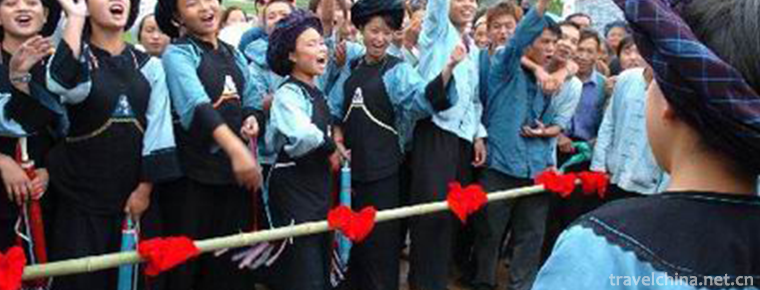
-
Chill chicken rice noodles
Cold chicken noodles, Yunnan snacks, cold rice noodles with ....
Views: 269 Time 2018-10-17 -
Laoshan Scenic SpotQingdao Shandong Province
Laoshan Scenic Area of Qingdao, located in Qingdao City, Shandong Province, is one of the first national key scenic spots approved and announced by the State .
Views: 178 Time 2018-12-08 -
Nine Towers Chinese Folk Happy Garden
Jiudingta Chinese Folk Happy Garden is a large-scale original ecological and cultural tourist area which integrates Chinese national customs, scenic spots, waterfalls, recreational exploration.
Views: 122 Time 2018-12-22 -
Mosukun of Oroqen Nationality
Mosukun of Oroqen nationality is Oroqen language, meaning "telling and singing stories". Most of the performances are performed by a single person without accompaniment of musical instrument.
Views: 141 Time 2019-04-28 -
Pinghu cymbal book
Cymbals are a unique form of local traditional folk art in the Wu dialect area of Jiangnan. According to the Records of Songjiang County, it was formed in the Qing Dynasty (1821-1850). It is now mainl.
Views: 134 Time 2019-06-09 -
Shangdang Laozi
Shangdang Laozi is one of Shanxi local operas. It is a kind of opera popular in southeastern Shanxi. Shangdang Laozi is a tributary of Wu'an Laozi in Hebei Province. During the Daoguang period of the .
Views: 379 Time 2019-06-13 -
Yangju Opera
Yangju, a local traditional drama in Yangzhou City, Jiangsu Province, is one of the national intangible cultural heritage. Yangzhou Opera, formerly known as "Weiyang Opera", is popular in Ya.
Views: 255 Time 2019-07-10 -
Yuejiaquan
Yuejiaquan is one of the traditional Chinese boxing which has been handed down completely in China. It was founded by Yue Fei, a national hero, according to his own learning and combating with the ene.
Views: 152 Time 2019-07-16 -
Red Army ferry scenic spot in Cangxi County
Cangxi Red Army ferry is located in Cangxi County, Sichuan Province. There is an ancient ferry by the Jialing River in Tashan Bay 3 km southeast of Cangxi city. Close to the mountain and by the water, the terrain is very dangerous, the rocks are steep, and the trees are green. Jialing River from north to south, beautiful scenery..
Views: 305 Time 2020-11-08 -
Leshan medical and health
By the end of 2018, Leshan City had 3259 health institutions (including village clinics). Among them, there are 102 hospitals, 207 health centers, 12 maternal and child health centers (stations, stations), 12 centers for Disease Control and prevention, 12 health .
Views: 329 Time 2020-12-17 -
Resources and environment of Leshan
By the end of 2018, the total energy consumption of Leshan City was 15.3994 million tons of standard coal, an increase of 580900 tons of standard coal over the previous year. The energy consumption of 10000 yuan GDP decreased by 4.38%..
Views: 144 Time 2020-12-17 -
Animal resources in Meishan
There are many species of wild animals in Meishan City, and the floristic composition is more complex, mainly subtropical forest animals. There are 469 species of terrestrial wild (vertebrate) animals, including 91 species of mammals, 18 orders, 27 families, 65 genera, .
Views: 331 Time 2020-12-18
